Christianity
From Wikipedia, the free encyclopedia
Christianity (from the Ancient Greek word Χριστός, Christos, a translation of the Hebrew מָשִׁיחַ, Māšîăḥ, meaning “the anointed one”,[1] together with the Latin suffixes -ian and -itas) is an Abrahamic, monotheistic[2] religion based on the life and oral teachings of Jesus of Nazareth as presented in the New Testament. Christianity is the world’s largest religion,[3][4] with about 2.4 billion adherents, known as Christians.[5][6][7][8] Christians believe that Jesus has a “unique significance” in the world.[9] Most Christians believe that Jesus is the Son of God, fully divine and fully human, and the saviour of humanity whose coming was prophesied in the Old Testament. Consequently, Christians refer to Jesus as Christ or the Messiah.
The foundations of Christian theology are expressed in ecumenical creeds. These professions of faith state that Jesus suffered, died, was buried, and was resurrected from the dead in order to grant eternal life to those who believe in him and trust in him for the remission of their sins. The creeds further maintain that Jesus bodily ascended into heaven, where he reigns with God the Father. Most Christian denominations teach that Jesus will return to judge everybody, living and dead, and to grant eternal life to his followers. He is considered the model of a virtuous life. His ministry, crucifixion, and resurrection are often referred to as “the gospel“, meaning “good news” (a loan translation of the Greek: εὐαγγέλιον euangélion). The term gospel also refers to written accounts of Jesus’s life and teaching, four of which – the Gospels of Matthew, Mark, Luke, and John – are considered canonical and included in Christian Bibles.
Worldwide, the three largest groups of Christianity are the Catholic Church, the Eastern Orthodox Church, and the various denominations of Protestantism. The Roman Catholic and Eastern Orthodox patriarchates split from one another in the schism of the 11th century, and Protestantism came into existence during the Reformation of the 16th century, splitting from the Roman Catholic Church.[23]
Beliefs
Christians share a certain set of beliefs that they hold as essential to their faith, though there are many important differences of interpretation and opinion of the Bible on which Christianity is based.[24]
Creeds
 |
Wikisource has original text related to this article:
|
 |
Wikisource has original text related to this article:
|
Concise doctrinal statements or confessions of religious beliefs are known as creeds (from Latin credo, meaning “I believe”). They began as baptismal formulae and were later expanded during the Christological controversies of the 4th and 5th centuries to become statements of faith.
Many evangelical Protestants reject creeds as definitive statements of faith, even while agreeing with some or all of the substance of the creeds. The Baptists have been non-creedal “in that they have not sought to establish binding authoritative confessions of faith on one another.”[25]:p.111 Also rejecting creeds are groups with roots in the Restoration Movement, such as the Christian Church (Disciples of Christ), the Evangelical Christian Church in Canada and the Churches of Christ.[26][27]:14–15[28]:123
The Apostles’ Creed remains the most popular statement of the articles of Christian faith which are generally acceptable to most Christian denominations that are creedal. It is widely used by a number of Christian denominations for both liturgical and catechetical purposes, most visibly by liturgical Churches of Western Christian tradition, including the Latin Church of the Catholic Church, Lutheranism, Anglicanism, and Western Rite Orthodoxy. It is also used by Presbyterians, Methodists, and Congregationalists. This particular creed was developed between the 2nd and 9th centuries. Its central doctrines are those of the Trinity and God the Creator. Each of the doctrines found in this creed can be traced to statements current in the apostolic period. The creed was apparently used as a summary of Christian doctrine for baptismal candidates in the churches of Rome.[29]
Its main points include:
The Nicene Creed, largely a response to Arianism, was formulated at the Councils of Nicaea and Constantinople in 325 and 381 respectively[30][31] and ratified as the universal creed of Christendom by the First Council of Ephesus in 431.[32]
The Chalcedonian Definition, or Creed of Chalcedon, developed at the Council of Chalcedon in 451,[33] though rejected by the Oriental Orthodox Churches,[34] taught Christ “to be acknowledged in two natures, inconfusedly, unchangeably, indivisibly, inseparably”: one divine and one human, and that both natures, while perfect in themselves, are nevertheless also perfectly united into one person.[35]
The Athanasian Creed, received in the Western Church as having the same status as the Nicene and Chalcedonian, says: “We worship one God in Trinity, and Trinity in Unity; neither confounding the Persons nor dividing the Substance.”[36]
Most Christians (Roman Catholics, Eastern Orthodox, Oriental Orthodox and Protestants alike) accept the use of creeds, and subscribe to at least one of the creeds mentioned above.[37]
Ten Commandments
The Ten Commandments are a set of biblical principles relating to ethics and worship which play a fundamental role in Judaism and most forms of Christianity. They include instructions to worship only God and to keep the Sabbath, and prohibitions against idolatry, blasphemy, murder, theft, and adultery. Different groups follow slightly different traditions for interpreting and numbering them. According to the synoptic gospels, Christ generalised the law into two underlying principles; The first is “Hear, O Israel: The Lord our God, the Lord is one; and you shall love the Lord your God with all your heart, and with all your soul, and with all your mind, and with all your strength.” While the second is “You shall love your neighbor as yourself.”[Matthew 22:34–40][Mark 12:28–33]
These are quotes from Deuteronomy 6:4 and Leviticus 19:18. Barnes’ Notes on the New Testament comments on these verses saying: “These comprehend the substance of what Moses in the law, and what the prophets have spoken. What they have said has been to endeavour to win men to the love of God and each other. Love to God and man comprehends the whole [of] religion; and to produce this has been the design of Moses, the prophets, the Saviour, and the apostles.”[38]
Jesus Christ
The central tenet of Christianity is the belief in Jesus as the Son of God and the Messiah (Christ). Christians believe that Jesus, as the Messiah, was anointed by God as savior of humanity, and hold that Jesus’ coming was the fulfillment of messianic prophecies of the Old Testament. The Christian concept of the Messiah differs significantly from the contemporary Jewish concept. The core Christian belief is that through belief in and acceptance of the death and resurrection of Jesus, sinful humans can be reconciled to God and thereby are offered salvation and the promise of eternal life.[39]
While there have been many theological disputes over the nature of Jesus over the earliest centuries of Christian history, Christians generally believe that Jesus is God incarnate and “true God and true man” (or both fully divine and fully human). Jesus, having become fully human, suffered the pains and temptations of a mortal man, but did not sin. As fully God, he rose to life again. According to the Bible, “God raised him from the dead”,[40] he ascended to heaven, is “seated at the right hand of the Father”[41] and will ultimately return[Acts 1:9–11] to fulfill the rest of Messianic prophecy such as the Resurrection of the dead, the Last Judgment and final establishment of the Kingdom of God.
According to the canonical gospels of Matthew and Luke, Jesus was conceived by the Holy Spirit and born from the Virgin Mary. Little of Jesus’ childhood is recorded in the canonical Gospels, however infancy Gospels were popular in antiquity. In comparison, his adulthood, especially the week before his death, is well documented in the Gospels contained within the New Testament, because that part of his life was believed to be most important. The Biblical accounts of Jesus’ ministry include: his baptism, miracles, preaching, teaching, and deeds.
Death and resurrection
Christians consider the resurrection of Jesus to be the cornerstone of their faith (see 1 Corinthians 15) and the most important event in history.[42] Among Christian beliefs, the death and resurrection of Jesus are two core events on which much of Christian doctrine and theology is based.[43][44] According to the New Testament Jesus was crucified, died a physical death, was buried within a tomb, and rose from the dead three days later.[Jn. 19:30–31] [Mk. 16:1] [16:6]
The New Testament mentions several resurrection appearances of Jesus on different occasions to his twelve apostles and disciples, including “more than five hundred brethren at once”,[1Cor 15:6] before Jesus’ Ascension to heaven. Jesus’ death and resurrection are commemorated by Christians in all worship services, with special emphasis during Holy Week which includes Good Friday and Easter Sunday.
The death and resurrection of Jesus are usually considered the most important events in Christian theology, partly because they demonstrate that Jesus has power over life and death and therefore has the authority and power to give people eternal life.[45]
Christian churches accept and teach the New Testament account of the resurrection of Jesus with very few exceptions.[46] Some modern scholars use the belief of Jesus’ followers in the resurrection as a point of departure for establishing the continuity of the historical Jesus and the proclamation of the early church.[47] Some liberal Christians do not accept a literal bodily resurrection,[48][49] seeing the story as richly symbolic and spiritually nourishing myth. Arguments over death and resurrection claims occur at many religious debates and interfaith dialogues.[50] Paul the Apostle, an early Christian convert and missionary, wrote, “If Christ was not raised, then all our preaching is useless, and your trust in God is useless.”[1Cor 15:14] [51]
Salvation
Paul the Apostle, like Jews and Roman pagans of his time, believed that sacrifice can bring about new kinship ties, purity, and eternal life.[52] For Paul the necessary sacrifice was the death of Jesus: Gentiles who are “Christ’s” are, like Israel, descendants of Abraham and “heirs according to the promise”.[Gal. 3:29] [53] The God who raised Jesus from the dead would also give new life to the “mortal bodies” of Gentile Christians, who had become with Israel the “children of God” and were therefore no longer “in the flesh”.[Rom. 8:9,11,16] [52]
Modern Christian churches tend to be much more concerned with how humanity can be saved from a universal condition of sin and death than the question of how both Jews and Gentiles can be in God’s family. According to both Catholic and Protestant doctrine, salvation comes by Jesus’ substitutionary death and resurrection. The Catholic Church teaches that salvation does not occur without faithfulness on the part of Christians; converts must live in accordance with principles of love and ordinarily must be baptized.[54][55] Martin Luther taught that baptism was necessary for salvation, but modern Lutherans and other Protestants tend to teach that salvation is a gift that comes to an individual by God’s grace, sometimes defined as “unmerited favor”, even apart from baptism.
Christians differ in their views on the extent to which individuals’ salvation is pre-ordained by God. Reformed theology places distinctive emphasis on grace by teaching that individuals are completely incapable of self-redemption, but that sanctifying grace is irresistible.[56] In contrast Catholics, Orthodox Christians and Arminian Protestants believe that the exercise of free will is necessary to have faith in Jesus.[57]
Trinity
Trinity refers to the teaching that the one God[2] comprises three distinct, eternally co-existing persons; the Father, the Son (incarnate in Jesus Christ), and the Holy Spirit. Together, these three persons are sometimes called the Godhead,[58][59][60] although there is no single term in use in Scripture to denote the unified Godhead.[61] In the words of the Athanasian Creed, an early statement of Christian belief, “the Father is God, the Son is God, and the Holy Spirit is God, and yet there are not three Gods but one God”.[62] They are distinct from another: the Father has no source, the Son is begotten of the Father, and the Spirit proceeds from the Father. Though distinct, the three persons cannot be divided from one another in being or in operation.[63]
The Trinity is an essential doctrine of mainstream Christianity. “Father, Son and Holy Spirit” represents both the immanence and transcendence of God. God is believed to be infinite and God’s presence may be perceived through the actions of Jesus Christ and the Holy Spirit.[64]
According to this doctrine, God is not divided in the sense that each person has a third of the whole; rather, each person is considered to be fully God (see Perichoresis). The distinction lies in their relations, the Father being unbegotten; the Son being begotten of the Father; and the Holy Spirit proceeding from the Father and (in Western Christian theology) from the Son. Regardless of this apparent difference, the three ‘persons’ are each eternal and omnipotent.
The word trias, from which trinity is derived, is first seen in the works of Theophilus of Antioch. He wrote of “the Trinity of God (the Father), His Word (the Son) and His Wisdom (Holy Spirit)”.[65] The term may have been in use before this time. Afterwards it appears in Tertullian.[66][67] In the following century the word was in general use. It is found in many passages of Origen.[68]
Trinitarians
Main article: Trinitarianism
Trinitarianism denotes those Christians who believe in the concept of the Trinity. Almost all Christian denominations and Churches hold Trinitarian beliefs. Although the words “Trinity” and “Triune” do not appear in the Bible, theologians beginning in the 3rd century developed the term and concept to facilitate comprehension of the New Testament teachings of God as Father, God as Jesus the Son, and God as the Holy Spirit. Since that time, Christian theologians have been careful to emphasize that Trinity does not imply three gods, nor that each member of the Trinity is one-third of an infinite God; Trinity is defined as one God in three Persons.[69]
Nontrinitarians
Nontrinitarianism refers to theology that rejects the doctrine of the Trinity. Various nontrinitarian views, such as adoptionism or modalism, existed in early Christianity, leading to the disputes about Christology.[70] Nontrinitarianism later appeared again in the Gnosticism of the Cathars in the 11th through 13th centuries, and by groups with Unitarian theology in the Protestant Reformation of the 16th century,[71] and in the Age of Enlightenment of the 18th century, and in some groups arising during the Second Great Awakening of the 19th century.
Scriptures
Christianity, like other religions, has adherents whose beliefs and biblical interpretations vary. Christianity regards the biblical canon, the Old Testament and the New Testament, as the inspired word of God. The traditional view of inspiration is that God worked through human authors so that what they produced was what God wished to communicate. The Greek word referring to inspiration in 2 Timothy 3:16 is Theopneustos, which literally means “God-breathed”.[72]
Some believe that divine inspiration makes our present Bibles inerrant. Others claim inerrancy for the Bible in its original manuscripts, although none of those are extant. Still others maintain that only a particular translation is inerrant, such as the King James Version.[73][74][75] Another view closely related is Biblical infallibility or limited inerrancy, which affirms that the Bible is free of error as a guide to salvation, but may include errors on matters such as history, geography or science.
The books of the Bible accepted among the Orthodox, Catholic and Protestant churches vary somewhat, with Jews accepting only the Hebrew Bible as canonical; there is however substantial overlap. These variations are a reflection of the range of traditions, and of the councils that have convened on the subject. Every version of the Old Testament always includes the books of the Tanakh, the canon of the Hebrew Bible. The Catholic and Orthodox canons, in addition to the Tanakh, also include the Deuterocanonical Books as part of the Old Testament. These books appear in the Septuagint, but are regarded by Protestants to be apocryphal. However, they are considered to be important historical documents which help to inform the understanding of words, grammar and syntax used in the historical period of their conception. Some versions of the Bible include a separate Apocrypha section between the Old Testament and the New Testament.[76] The New Testament, originally written in Koine Greek, contains 27 books which are agreed upon by all churches.
Modern scholarship has raised many issues with the Bible. While the Authorized King James Version is held to by many because of its striking English prose, in fact it was translated from the Erasmus Greek Bible which in turn “was based on a single 12th Century manuscript that is one of the worst manuscripts we have available to us”.[77] Much scholarship in the past several hundred years has gone into comparing different manuscripts in order to reconstruct the original text. Another issue is that several books are considered to be forgeries. The injunction that women “be silent and submissive” in 1 Timothy 12[78] is thought by many to be a forgery by a follower of Paul, a similar phrase in 1 Corinthians 14,[79] which is thought to be by Paul, appears in different places in different manuscripts and is thought to originally be a margin note by a copyist.[77] Other verses in 1 Corinthians, such as 1 Corinthians 11:2–16 where women are instructed to wear a covering over their hair “when they pray or prophesies”,[80] contradict this verse.
A final issue with the Bible is the way in which books were selected for inclusion in the New Testament. Other Gospels have now been recovered, such as those found near Nag Hammadi in 1945, and while some of these texts are quite different from what Christians have been used to, it should be understood that some of this newly recovered Gospel material is quite possibly contemporaneous with, or even earlier than, the New Testament Gospels. The core of the Gospel of Thomas, in particular, may date from as early as 50 AD, and if so would provide an insight into the earliest gospel texts that underlie the canonical Gospels, texts that are mentioned in Luke 1:1–2. The Gospel of Thomas contains much that is familiar from the canonical Gospels – verse 113, for example (“The Father’s Kingdom is spread out upon the earth, but people do not see it”),[81] is reminiscent of Luke 17:20–21[82][83] – and the Gospel of John, with a terminology and approach that is suggestive of what was later termed Gnosticism, has recently been seen as a possible response to the Gospel of Thomas, a text that is commonly labelled proto-Gnostic. Scholarship, then, is currently exploring the relationship in the Early Church between mystical speculation and experience on the one hand and the search for church order on the other, by analyzing new-found texts, by subjecting canonical texts to further scrutiny, and by an examination of the passage of New Testament texts to canonical status.
Catholic and Orthodox interpretations
In antiquity, two schools of exegesis developed in Alexandria and Antioch. Alexandrine interpretation, exemplified by Origen, tended to read Scripture allegorically, while Antiochene interpretation adhered to the literal sense, holding that other meanings (called theoria) could only be accepted if based on the literal meaning.[84]
Catholic theology distinguishes two senses of scripture: the literal and the spiritual.[85]
The literal sense of understanding scripture is the meaning conveyed by the words of Scripture. The spiritual sense is further subdivided into:
Regarding exegesis, following the rules of sound interpretation, Catholic theology holds:
- the injunction that all other senses of sacred scripture are based on the literal[86][87]
- that the historicity of the Gospels must be absolutely and constantly held[88]
- that scripture must be read within the “living Tradition of the whole Church”[89] and
- that “the task of interpretation has been entrusted to the bishops in communion with the successor of Peter, the Bishop of Rome“.[90]
Share this: But before....ask for permission!



![SPIRITUAL REFLECTION “The Church moves forward like the advancing dawn” From the Moral Reflections on Job by Saint Gregory the Great, pope (Lib. 29,2-4: PL 76, 478-480) Since the daybreak or the dawn is changed gradually from darkness into light, the Church, which comprises the elect, is fittingly styled daybreak or dawn. […] This reference to the dawn conjures up a still more subtle consideration. The dawn intimates that the night is over; it does not yet proclaim the full light of day. While it dispels the darkness and welcomes the light, it holds both of them, the one mixed with the other, as it were. Are not all of us who follow the truth in this life daybreak and dawn? While we do some things which already belong to the light, we are not free from the remnants of darkness. In Scripture the Prophet says to God: “No living being will be justified in your sight”. Scripture also says: “In many ways all of us give offense”. […] What is the place of the dawn but the perfect clearness of eternal vision? When the dawn has been brought there, it will retain nothing belonging to the darkness of night. When the Psalmist writes: My soul thirsts for the living God; when shall I go and see the face of God?, does he not refer to the effort made by the dawn to reach its place? Paul was hastening to the place which he knew the dawn would reach when he said he wished to die and to be with Christ. He expressed the same idea when he said: For me to live is Christ, and to die is gain.](https://euzicasa.files.wordpress.com/2015/06/screenshot_3.jpg?w=445&h=328)



















![“The days between the resurrection and the ascension of the Lord” From a sermon by Saint Leo the Great, pope (Sermo 1 de Ascensione, 2-4: PL 54, 395-396) Beloved, the days which passed between the Lord’s resurrection and his ascension were by no means uneventful; during them great sacramental mysteries were confirmed, great truths revealed. In those days the fear of death with all its horrors was taken away, and the immortality of both body and soul affirmed. […] The blessed apostles together with all the others had been intimidated by the catastrophe of the cross, and their faith in the resurrection had been uncertain; but now they were so strengthened by the evident truth that when their Lord ascended into heaven, far from feeling any sadness, they were filled with great joy. Indeed that blessed company had a great and inexpressible cause for joy when it saw man’s nature rising above the dignity of the whole heavenly creation, above the ranks of angels, above the exalted status of archangels. Nor would there be any limit to its upward course until humanity was admitted to a seat at the right hand of the eternal Father, to be enthroned at last in the glory of him to whose nature it was wedded in the person of the Son.](https://euzicasa.files.wordpress.com/2015/05/pope-francis-daily-homilies_spiritual-reflection.jpg?w=500&h=345)













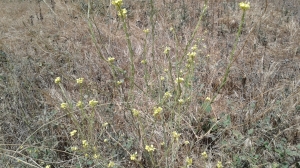














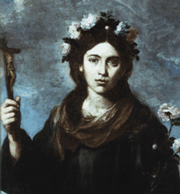

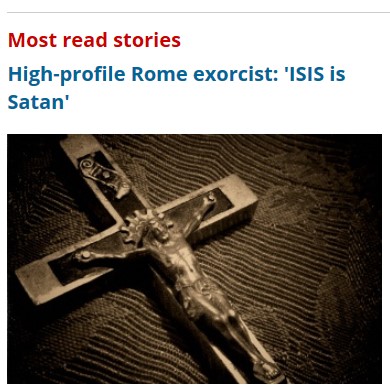









































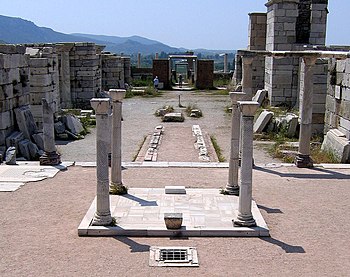

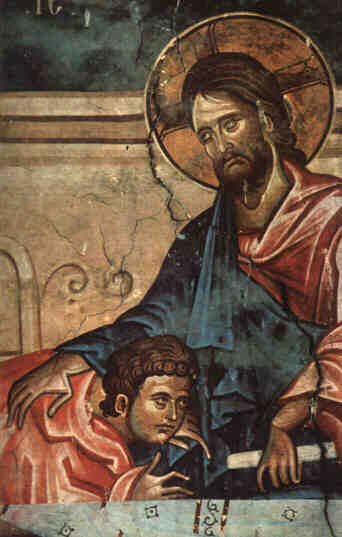

















































































































You must be logged in to post a comment.